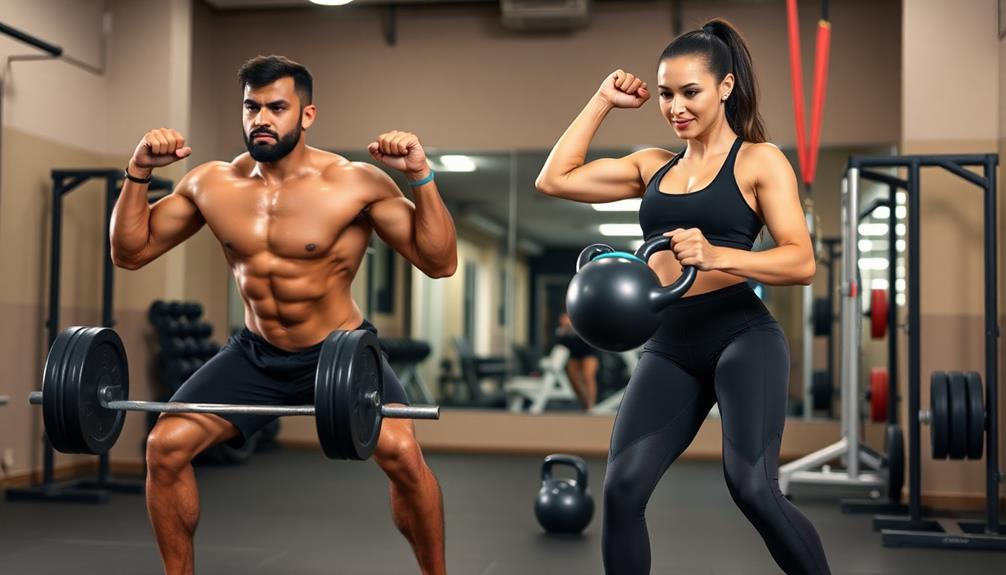To optimize your athletic performance, consider incorporating a variety of strength and conditioning programs. Olympic weightlifting can boost power and explosiveness, while functional movement systems improve flexibility and balance. High-intensity interval training enhances endurance and speed, and periodization models help you reach peak performance. Sport-specific conditioning tailors exercises to your particular needs, and bodyweight workouts develop functional strength. CrossFit offers varied routines to avoid plateaus, combining multiple training methods. Core stability workouts and resistance band training can further enhance your overall fitness. By exploring these diverse approaches, you'll discover the most effective ways to elevate your athletic abilities.
Core Insight
- Olympic Weightlifting Programs develop strength, power, and explosiveness through mastering complex lifts like snatch and clean and jerk.
- Functional Movement Systems focus on flexibility, balance, and seven basic movement patterns to enhance overall athletic performance.
- High-Intensity Interval Training (HIIT) improves endurance, speed, and power through short bursts of intense effort in 15-30 minute sessions.
- Periodization Training Models optimize performance by dividing training into distinct phases with varying goals and intensity levels.
- Sport-Specific Conditioning Regimens tailor exercises to improve performance in particular sports while enhancing overall athletic abilities.
Olympic Weightlifting Programs
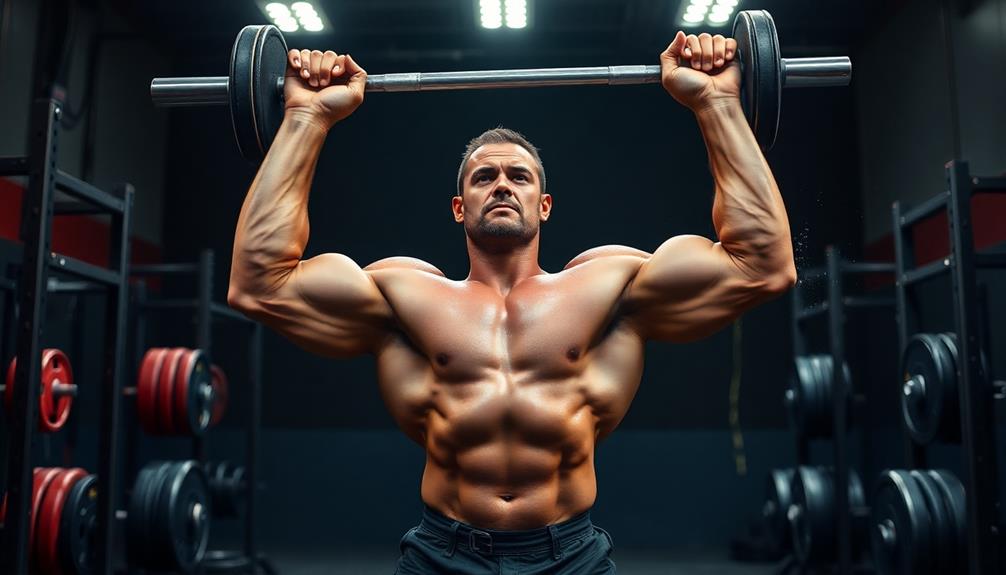
Olympic weightlifting programs are the foundation of strength training for many athletes. These programs emphasize two main lifts: the snatch and the clean and jerk. Mastering these complex movements can greatly boost your strength, power, and explosiveness. Adding mobility tools for athletes to your routine can improve your performance and lower your risk of injury during these challenging lifts.
To begin, learn the right technique. Start with lighter weights and slowly increase the load as you get better. A standard program includes variations of these lifts, like hang cleans and power snatches, along with supporting exercises such as squats and pull-ups.
Structure your workouts with 3-5 sets of 2-5 reps for each Olympic lift. Focus on form over weight to avoid injuries. Consistency matters most. Try to do 2-3 Olympic lifting sessions per week, giving yourself enough rest between workouts.
Functional Movement Systems

Functional Movement Systems (FMS) is all about flexibility and balance. It looks at how you move as a whole, not just one part at a time. FMS breaks down movement into seven basic patterns: deep squat, hurdle step, in-line lunge, shoulder mobility, active straight-leg raise, trunk stability push-up, and rotary stability. You can use resistance tubes to make these movements harder and get stronger. Resistance tubes are great because you can use them in lots of different ways to target specific areas.
FMS helps you find weak spots and imbalances in your body. Once you know what they are, you can make a plan to fix them. This helps you move better and lowers your chance of getting hurt. FMS isn't just about being strong; it's about moving well and efficiently.
Adding FMS to your workouts can help you do better in all kinds of sports. When you have a strong base of good movement, you'll have more power, agility, and coordination no matter what sport you play.
High-Intensity Interval Training (HIIT)

High-Intensity Interval Training, or HIIT, is a powerful workout method that can boost your athletic performance. HIIT sessions involve short bursts of intense effort followed by brief rest periods. This back-and-forth pattern pushes your heart and lungs to work harder, which can improve your endurance, speed, and power. Just like compression sleeves provide targeted support for specific muscles, HIIT offers focused intensity to help you become a better all-around athlete.
Most HIIT workouts last between 15-30 minutes, so they're a great way to get an effective workout in a short amount of time. Sprints, burpees, and jump squats are all common HIIT exercises. The main idea is to give maximum effort during the work intervals, then recover just enough to tackle the next round.
The benefits of HIIT go beyond the workout itself. After you finish, your body will continue burning extra calories due to something called the "afterburn effect." HIIT can also help increase your VO2 max (the maximum amount of oxygen your body can use during exercise), burn more fat, and improve how your body responds to insulin.
Periodization Training Models
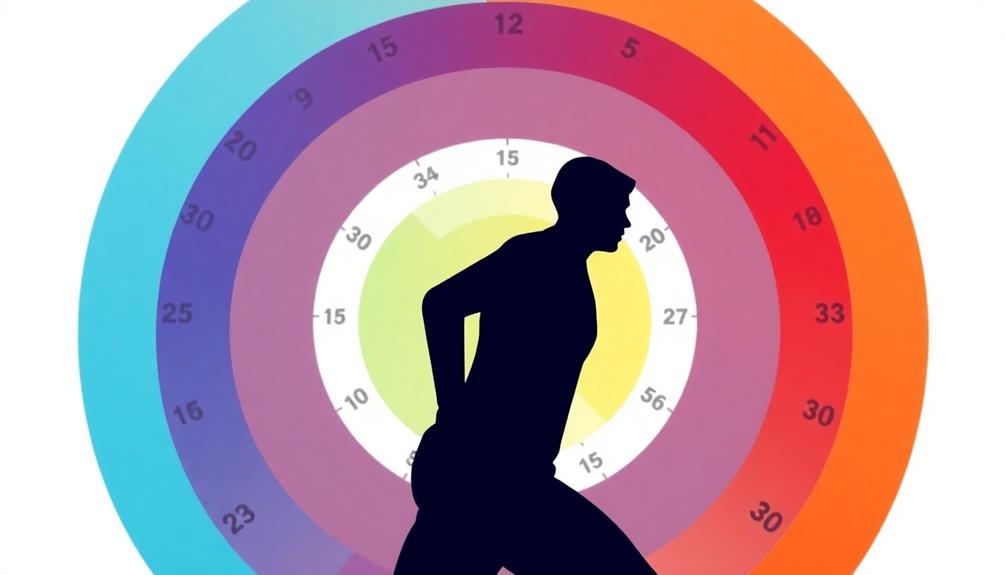
Many athletes and coaches rely on periodization training models to reach peak performance while avoiding burnout. These models break training into distinct phases, each focusing on different goals and workout intensity. As you progress through a periodized program, you'll generally move from overall conditioning to practicing specific skills for your sport. Proper tracking and customization are key to getting the most out of periodization while reducing injury risks.
Four widely used periodization models include:
- Linear periodization
- Undulating periodization
- Block periodization
- Conjugate periodization
Sport-Specific Conditioning Regimens
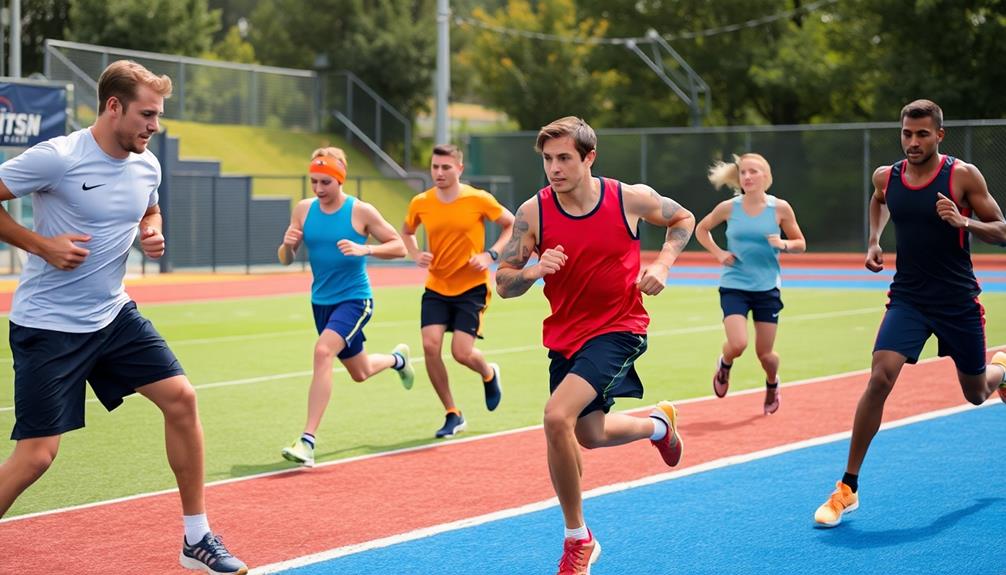
Sport-specific training helps you get better at your sport. The exercises you do should be similar to the way you move when playing. For instance, basketball players and marathon runners will train very differently.
Here are some examples of exercises for different sports:
| Sport | Drill 1 | Drill 2 | Drill 3 |
|---|---|---|---|
| Soccer | Box jumps | Shuttle runs | Core rotations |
| Swimming | Pull-ups | Leg press | Flutter kicks |
| Tennis | Medicine throws | Lateral lunges | Wrist curls |
Your training program should include both general fitness and sport-specific drills. This helps you become a well-rounded athlete while also improving the particular skills you need for your sport. As you progress, remember to check how you're doing and change your routine if needed. This will help you keep getting better over time.
Plyometric Training Programs

Plyometric training is a powerful way to take your sports performance to new heights. It uses quick, intense exercises to boost your explosive power, speed, and agility. The focus is on rapid stretching and contracting of muscles, which helps you generate force quickly. Just like compression sleeves, plyometric training can lower your risk of getting hurt and make you a better athlete overall.
Here's what plyometric training can do for you:
- Jump higher
- Accelerate and slow down faster
- Perform better in your sport
- Reduce chances of injury
To get started with plyometrics, begin with simple exercises like box jumps, jump squats, and medicine ball throws. Slowly make the exercises harder as you get stronger and better at the techniques. Make sure you do the movements correctly and rest enough between workouts to avoid overdoing it. Keep in mind that plyometrics are tough, so they should be added to your current training program, not replace it completely.
Core Stability Workouts
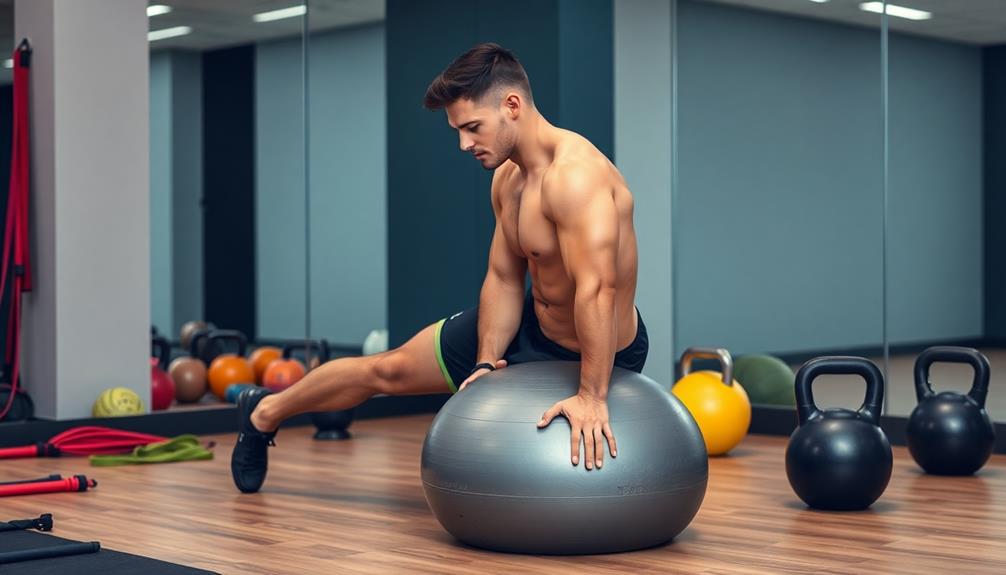
A strong core is the foundation of athletic performance. It's not just about six-pack abs; core stability means strengthening the muscles around your midsection, including your lower back and hips. To improve core stability, do exercises that challenge your balance and require you to hold a stable position. Foam rollers are great tools for enhancing core workouts. They improve flexibility and muscle recovery while adding an extra challenge to your routine.
Start with basic exercises like planks, side planks, and bird dogs. As you get better, add dynamic movements such as Russian twists, stability ball rollouts, and medicine ball throws. Include rotational exercises, which are important for many sports. Do core workouts 2-3 times per week, focusing on proper form rather than high reps. A stable core will improve your athleticism, reduce injury risk, and enhance your sports performance.
Resistance Band Training
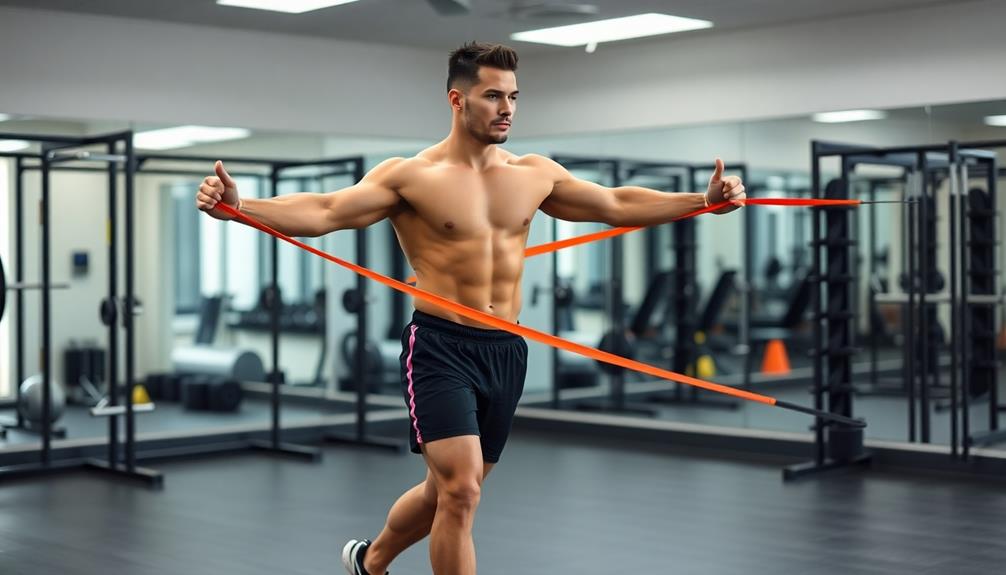
Resistance bands are a great choice for strength training. They're affordable, easy to carry around, and work well for all fitness levels. When buying resistance bands, think about how much resistance you need and look for high-quality materials like natural latex. This will help your bands last longer and work better.
Using resistance bands has many perks:
- They provide resistance through the whole movement
- They're easier on your joints than weights
- They improve balance and coordination
- They let you do functional exercises
If you're new to resistance bands, start with a lower resistance level and focus on using good form. As you get stronger, you can move up to bands with more tension. Resistance bands work well for warming up, strength training, and recovery exercises. They're especially good for working smaller stabilizer muscles and getting your muscles to activate more. Keep the band tight through each rep to get the most out of your workout.
Bodyweight Exercise Programs
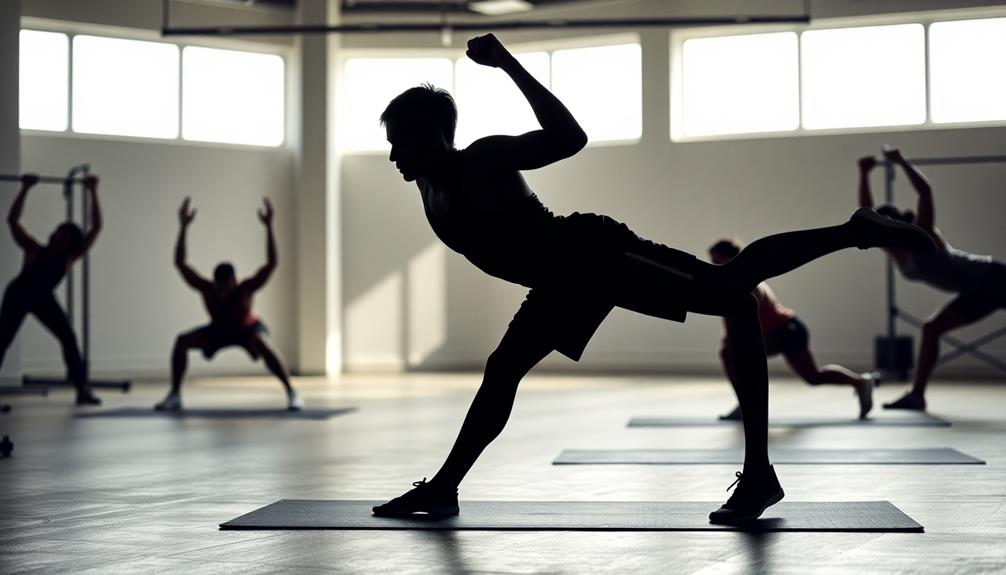
Bodyweight exercises are a great way to build strength and get fit without needing any equipment. You can do them anywhere, anytime. They help you develop functional strength, balance, and body control. You can also use foam rollers to massage your muscles and improve flexibility, which makes your workouts even better.
Some of the best bodyweight exercises are:
- Push-ups
- Squats
- Lunges
- Planks
- Burpees
To make an effective bodyweight program, focus on exercises that work multiple muscles at the same time. Start with 3-4 sets of 8-12 reps for each exercise. You can make it harder by trying different versions, like single-leg squats or diamond push-ups, or by adding in explosive movements like jump squats.
CrossFit for Athletes

CrossFit is a popular workout program among athletes. It combines weightlifting, cardio, and functional movements to improve overall fitness. CrossFit can benefit athletes in several ways:
- Increased power and explosiveness
- Better endurance and stamina
- More strength and muscle
- Improved body awareness and coordination
CrossFit workouts are varied, which helps athletes avoid plateaus and keep making progress. The exercises include Olympic lifts, bodyweight movements, and cardio. They are done in timed intervals or for maximum reps. This style is similar to the stop-and-start pace of many sports competitions.
CrossFit also uses tools like foam rollers and massage devices. These help with muscle recovery after tough workouts by reducing soreness and increasing blood flow. However, it's important to use proper form to avoid injuries, especially with complex movements done quickly.
Frequently Asked Questions
How Often Should Athletes Switch up Their Strength and Conditioning Programs?
You should vary your strength and conditioning program every 4-6 weeks. This prevents plateaus and keeps your body challenged. However, don't change too frequently, as you need time to adapt and make progress within each program.
What Role Does Nutrition Play in Enhancing the Effectiveness of These Programs?
Nutrition plays a vital role in your program's effectiveness. You'll need to fuel your body with the right nutrients to support muscle growth, recovery, and energy levels. Don't neglect your diet; it's as significant as your workouts.
Are There Age-Specific Considerations When Implementing Strength and Conditioning Programs for Athletes?
Yes, there are age-specific considerations. You'll need to adjust your programs based on an athlete's developmental stage. For younger athletes, focus on foundational skills and proper form. As they age, you can gradually increase intensity and complexity.
How Can Athletes Prevent Overtraining While Following Intensive Strength and Conditioning Regimens?
To prevent overtraining, you'll need to prioritize recovery. Listen to your body, get enough sleep, and maintain proper nutrition. Don't skip rest days, and vary your workouts. Monitor your performance and adjust intensity when needed.
What Are the Best Recovery Techniques to Complement These Strength and Conditioning Programs?
To optimize recovery, you'll want to prioritize sleep, nutrition, and active rest. Try foam rolling, ice baths, and massage. Don't forget to hydrate and consider compression garments. Stretching and light cardio can also aid recovery.

